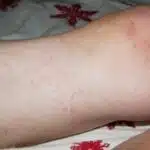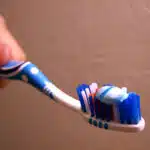Nylon is a durable synthetic fabric that is commonly used in clothing, especially activewear, due to its moisture-wicking properties. However, one of the downsides of nylon is its susceptibility to oil stains. Whether it’s cooking oil or motor oil, oil stains can be difficult to remove from nylon clothes without damaging the fabric. As an experienced cleaning expert, I have come across various methods for removing oil stains from nylon clothes and in this article, I will share some effective tips and tricks.
Removing oil stains from nylon clothes requires patience and careful handling. Haphazardly trying to remove the stain can worsen the situation by spreading the stain or causing damage to the fabric. It is important to act fast and follow appropriate techniques to ensure that the stain is completely removed without affecting the color or texture of the garment. In this article, I will provide step-by-step instructions on how to remove oil stains from nylon clothes using common household items such as baking soda, dish soap, and white vinegar. By following these tips, you can save your favorite nylon clothes from being ruined by stubborn oil stains and extend their lifespan.
Understanding The Nature Of Oil Stains On Nylon Clothes
Nylon clothes are known for their durability, making them a popular choice for everyday wear. However, as with any other material, nylon is not immune to oil stains. Oil stains can be particularly challenging to remove from nylon clothes because the material tends to absorb and retain oils more readily than other fabrics. Understanding oil stain removal and preventing oil stain setting in are therefore crucial when dealing with nylon clothes.
To begin with, it’s important to understand that oil stains on nylon clothes require prompt attention. The longer you wait before treating the stain, the more difficult it will be to remove. When left untreated, oil stains can set into the fabric fibers and become permanent. As such, acting fast is essential in preventing the stain from becoming a permanent fixture on your nylon garment.
Another factor to consider when dealing with oil stains on nylon clothes is the type of oil involved. Different oils have different chemical compositions, which may require specific cleaning solutions or techniques to remove effectively. For example, removing grease requires a different approach than removing motor oil or cooking oil stains. Understanding which type of oil has stained your nylon garment can help determine the best course of action for effective removal.
In summary, understanding how to remove oil stains from nylon clothes starts with prevention and acting fast when an accident occurs. Time is of the essence when dealing with these types of stains; hence quick action can make all the difference between successful removal and a permanent blotch on your garment’s reputation. By taking proactive measures like avoiding contact with oily substances or using pre-treatment solutions before washing, you can minimize the risk of staining your favorite nylon clothing items in the long run.
Acting Fast To Prevent Oil Stains From Setting In
Preventing oil stains on nylon clothes is crucial to avoid stubborn and difficult-to-remove stains. Acting fast is the key to prevent the oil from setting in and penetrating the fabric fibers, making it harder to remove. When dealing with an emergency oil stain removal situation, every second counts. The longer you wait, the more challenging it becomes to eliminate the stain.
To prevent oil stains from setting in, use a clean cloth or paper towel to blot up as much of the excess oil as possible immediately. Avoid rubbing the stain as this can spread it further into the fabric. If you don’t have a cloth or paper towel at hand, try using baby powder or cornstarch instead. Sprinkle it directly onto the stain and let it sit for a few minutes before brushing off gently.
When faced with an emergency oil stain removal situation, it’s easy to feel overwhelmed and stressed out. However, by acting quickly and following these preventive measures, you can minimize the damage caused by oil stains on your nylon clothes. Remember that prevention is always better than cure; therefore, taking immediate action will help prevent permanent staining of your precious clothing items.
Next Step: Blotting the Stain with Oil-Absorbing Materials…
Blotting The Stain With Oil-Absorbing Materials
Acting fast to prevent oil stains from setting into your nylon clothes is essential. However, sometimes accidents can happen, and you may find yourself with an unsightly oil stain on your favorite outfit. Don’t worry; there are methods you can use to remove the stain without causing any damage to the fabric. In this section, we will discuss how blotting the stain with oil-absorbing materials can help.
Blotting the stain with oil-absorbing pads is an effective method for removing oil stains from nylon clothes. These pads are specially designed to absorb oils and greases from fabrics. To use them, place a pad over the stained area and press down firmly. The pad will begin to absorb the oil immediately, so it’s essential to replace it regularly until no more oil is being absorbed.
If blotting with oil-absorbing pads doesn’t work, try heat treatment for stubborn stains. Place a clean cloth over the affected area and apply heat using a hairdryer or iron on low heat setting for a few minutes. The heat helps loosen up the oils in the fabric, making them easier to remove. Be sure not to use high heat as this can damage nylon fabric.
Now that we’ve covered blotting with oil-absorbing materials and heat treatment let’s move on to our next method: applying baking soda to the oil stain. This method involves creating a paste using baking soda and water and applying it directly onto the stain before washing your clothes as usual. It’s an effective way of removing even stubborn stains without damaging your clothes’ quality or color.
Applying Baking Soda To The Oil Stain
Anticipating the possible skepticism of some people, it is normal to doubt the effectiveness of baking soda in removing oil stains from nylon clothes. However, using baking soda for laundry stains has been a tried and tested method for years. Not only is baking soda effective, but it also eliminates odors that might have resulted from the stain.
To apply baking soda, first lay the nylon fabric flat on a surface. Sprinkle a generous amount of baking soda onto the oil stain and let it sit for about twenty minutes. Then, gently scrub the area with a soft brush or sponge until the stain starts to lift off. Finally, rinse the fabric with cold water and repeat if necessary.
Aside from its use in laundry, baking soda has several alternative uses for cleaning. It is an excellent natural cleaner due to its mild alkaline properties that can break down dirt and grease. Baking soda can be used to clean floors, bathrooms, kitchen surfaces and even carpets! Its versatility makes it an essential item in any household cleaning kit.
With the use of baking soda as discussed above, one can effectively remove oil stains from nylon clothes without causing damage to the material. The next step in this process is utilizing dish soap to remove oil stains which will be discussed further in subsequent sections.
Using Dish Soap To Remove Oil Stains
To begin the process of removing oil stains from nylon clothes, one will need a few simple ingredients, including a liquid dish soap, white vinegar, and a clean cloth.
Once the necessary ingredients have been gathered, the stained area should be dampened with warm water and a small amount of liquid dish soap should be applied.
After the dish soap has been applied, a clean cloth should be used to lightly scrub the stained area before rinsing with warm water.
Finally, a solution of equal parts white vinegar and warm water should be applied to the stained area and allowed to sit for several minutes before being rinsed with warm water.
Ingredients Needed
Are you tired of dealing with stubborn oil stains on your nylon clothes? Using natural alternatives like dish soap can effectively remove these unsightly marks. However, before getting started, there are some precautions to take to ensure that the cleaning process goes smoothly.
Firstly, gather all the necessary ingredients for this method. You will need a gentle dish soap that is free from dyes and fragrances as well as warm water. A clean white cloth and a toothbrush can also come in handy during the cleaning process. Remember to test the dish soap on a small, inconspicuous area of the garment before proceeding with stain removal to avoid damaging the fabric.
Next, it is important to follow proper procedures when removing oil stains from nylon clothes. Begin by blotting any excess oil off the garment using a clean cloth or paper towel. Then apply a small amount of dish soap directly onto the stain and work it into the fabric gently using circular motions with your fingertips or a soft-bristled toothbrush. Leave it for 5-10 minutes before rinsing thoroughly with warm water and air-drying.
In conclusion, using dish soap is an effective way to remove oil stains from nylon clothes while choosing natural alternatives. Take precautions such as testing on an inconspicuous area and following proper procedures for best results. With patience and care, you can restore your clothing to its original state in no time!
Step-By-Step Process
Oil stains are a common issue that many people face when it comes to clothing, particularly nylon fabrics. These stains can be tricky to remove, but using the right techniques and products can make all the difference. One effective method is using dish soap, which is a natural alternative to harsh chemicals and can effectively break down oil molecules.
Before delving into the step-by-step process of removing oil stains with dish soap, it’s important to understand the causes of these unsightly marks. Oil stains can occur from a variety of sources, from cooking and food spills to automotive grease and makeup. Regardless of the cause, taking precautions against these stains can help prevent them from occurring in the first place. For example, wearing an apron while cooking or applying makeup carefully can reduce the likelihood of oil stains on your clothing.
Now onto the step-by-step process for using dish soap to remove oil stains from nylon clothes. Begin by blotting any excess oil off the garment with a clean cloth or paper towel. Then apply a small amount of gentle dish soap directly onto the stain and work it into the fabric gently using circular motions with your fingertips or a soft-bristled toothbrush. Allow it to sit for 5-10 minutes before rinsing thoroughly with warm water and air-drying. By following these steps and taking proper precautions against oil stains, you can keep your nylon clothes looking their best for longer.
Applying White Vinegar To The Oil Stain
White vinegar is a natural solution that can effectively remove oil stains from nylon clothes. It works by breaking down the grease and oil particles, making it easier to lift them off the fabric. Not only is vinegar an effective cleaning agent, but it is also environmentally friendly and inexpensive.
To apply white vinegar to an oil stain on nylon clothes, follow these steps:
- Wet a clean cloth with white vinegar and gently dab it onto the stain.
- Allow the vinegar to sit on the stain for about 15-20 minutes.
- Rinse the area with cold water and repeat as necessary until the stain disappears.
- For tougher stains, mix equal parts of white vinegar and baking soda into a paste and apply it directly onto the stain. Let it sit for 30 minutes before rinsing it off with cold water.
Using vinegar for other types of stains is also possible as it is a versatile cleaning solution that can tackle various types of blemishes. Moreover, using natural cleaning solutions such as white vinegar has many benefits, including being less harmful to people and pets than harsh chemicals found in traditional cleaners.
Transitioning into using rubbing alcohol to remove oil stains, another effective method involves applying rubbing alcohol directly to the stain before washing your nylon clothes.
Using Rubbing Alcohol To Remove Oil Stains
- Preparing the rubbing alcohol for removing oil stains from nylon clothes requires a few simple steps.
- First, the rubbing alcohol should be combined with some warm water in a bowl, in a ratio of one part rubbing alcohol to two parts water.
- Once the mixture is ready, the fabric should be saturated with the solution and then allowed to soak for a few minutes.
- Once the solution has been allowed to soak, the fabric should be gently scrubbed with a brush or soft cloth before being rinsed with clean water and allowed to dry.
Preparing The Rubbing Alcohol
To effectively remove oil stains from nylon clothes, using rubbing alcohol is an excellent solution. However, it is essential to prepare the rubbing alcohol correctly to avoid any damage or discoloration to the fabric. There are different types of rubbing alcohols available in the market, such as denatured, isopropyl and ethyl alcohol. It is crucial to choose the right type of rubbing alcohol for nylon clothes.
Before using rubbing alcohol on a nylon garment, it is essential to test its colorfastness. To do this, apply a small amount of rubbing alcohol on an inconspicuous area of the garment and allow it to dry for at least 10 minutes. If there are no signs of discoloration or damage, you can proceed with using the rubbing alcohol on the oil stain.
When preparing the rubbing alcohol solution, mix equal parts water and rubbing alcohol. This solution will help break down the oil stain and make it easier to remove from your nylon clothes. Make sure that you only use a small amount of this solution and gently dab it onto the affected area using a clean white cloth. Continue blotting until the stain disappears completely.
In conclusion, to remove oil stains from nylon clothes successfully, proper preparation of rubbing alcohol is essential. By choosing the right type of rubbing alcohol and testing for colorfastness before use, you can ensure that your nylon clothes stay in excellent condition while removing stubborn oil stains quickly and easily. Remember to always use caution when working with chemicals and follow all safety guidelines provided by manufacturers when handling cleaning solutions.
Applying The Rubbing Alcohol
Once you have prepared the rubbing alcohol solution, it is time to apply it to the oil stain on your nylon clothes. Before applying, make sure that the area is dry and free of any loose dirt or debris. It is also essential to keep in mind that using alternative solvents such as vinegar or lemon juice may not be as effective as rubbing alcohol.
When applying the rubbing alcohol solution, it is crucial to work quickly and with caution. Rubbing alcohol evaporates quickly, so there is a time limit for applying it to the stain before it dries up. Gently dab a small amount of the solution onto the affected area using a clean white cloth, being careful not to rub too hard or damage the fabric.
Continue blotting until you see significant progress in removing the oil stain from your nylon clothes. If necessary, repeat this process several times until you are satisfied with the results. Remember that patience and persistence are key when dealing with stubborn stains like oil on nylon fabrics. By following these steps carefully, you can effectively remove oil stains from your nylon clothes and restore them to their original condition.
Applying Cornstarch To The Oil Stain
Cornstarch is an effective solution for removing oil stains from nylon clothes. It is a readily available household item that can be found in most kitchens. The benefits of using cornstarch are numerous, as it helps to absorb the excess oil and prevents it from spreading further into the fabric.
To apply cornstarch to the oil stain, start by laying the garment on a flat surface and sprinkling the affected area with a generous amount of cornstarch. Allow the cornstarch to sit on the fabric for at least 30 minutes before brushing it off using a soft-bristled brush. You may need to repeat this process several times until the oil stain has been completely removed.
If you do not have cornstarch readily available, there are alternative methods you can use to remove oil stains from nylon clothes. One option is to use baking soda, which works similarly to cornstarch by absorbing excess oil from fabrics. Another alternative is dishwashing detergent, which helps to break down the oils and remove them from clothing fibers. However, be sure to test these alternatives on an inconspicuous area of your garment first before proceeding with full treatment.
To continue removing oil stains from nylon clothes, another effective method is using detergent. This involves applying a small amount of detergent directly onto the stain and rubbing it gently with your fingers or a soft-bristled brush. Then rinse thoroughly with cold water before washing in hot water with laundry detergent as usual. This method works well for fresh oil stains but may require multiple treatments for older or set-in stains.
Using Detergent To Remove Oil Stains
To effectively remove oil stains from nylon clothes, one of the most common methods is by using detergent. This is a simple yet effective way to get rid of unsightly oil marks on your garments. Before starting, ensure that you have the necessary cleaning materials such as hot water and detergent.
Using hot water is key when removing oil stains with detergent. The heat helps to break down the oil particles and loosen them from the fabric fibers. Begin by soaking the stained area in hot water for about 10 minutes before adding detergent. After soaking, apply a small amount of detergent directly onto the stain and work it into the fabric gently. Let it sit for about 5-10 minutes before rinsing thoroughly with hot water.
If you don’t have any detergent available, there are other ways to remove oil stains without it. One option is to use baking soda or cornstarch as an alternative. Simply sprinkle either of these powders onto the stained area and let it sit for about 30 minutes before brushing off excess powder. Then, proceed to pre-treat with a stain remover before washing as usual.
Transitioning into the next section, pre-treating the oil stain with stain remover can be an effective way to ensure complete removal of stubborn stains. It’s important to note that different types of stains require different types of treatment, so always read labels carefully before applying any products onto your clothing.
Pre-Treating The Oil Stain With Stain Remover
After using detergent to remove as much of the oil stain as possible, it’s time to move on to pre-treating techniques. This step is crucial because nylon is known for being a difficult fabric to clean, especially when it comes to oil stains. Pre-treating the stain will help break down the oils and make them easier to remove in the next step.
There are various options available for pre-treating the oil stain on your nylon clothes. Here are three popular stain remover options:
- White vinegar: Soak a cloth in white vinegar and dab at the stain until it disappears.
- Baking soda: Mix baking soda with water until it becomes a paste, then apply it directly onto the stain and let it sit for 30 minutes before rinsing.
- Dish soap: Apply dish soap directly onto the stained area and work it into a lather with your fingers. Let it sit for 10-15 minutes before rinsing thoroughly.
By using one of these pre-treatment options, you’ll be able to effectively remove more of the oil stain from your nylon clothes. Once you’ve completed this step, you’re ready to move on to soaking your clothes in hot water, which we’ll cover in the next section.
Soaking The Nylon Clothes In Hot Water
Hot water is a great solution for removing oil stains from nylon clothes. In fact, studies have shown that soaking nylon clothes in hot water helps to break down the oil molecules, making it easier to remove the stain. According to research, soaking nylon clothes in hot water for at least 30 minutes can significantly improve the chances of completely removing an oil stain.
The benefits of hot water go beyond just its ability to remove oil stains. Hot water also helps to sanitize and disinfect clothing, killing off any bacteria or germs that may be present on the fabric. Additionally, soaking nylon clothes in hot water can help to soften the fabric, making it more comfortable and easier to wear.
If you don’t have access to hot water or if you’re worried about damaging your nylon clothes, there are alternatives you can use for soaking. For example, you could try using a mixture of vinegar and baking soda. Simply mix equal parts of vinegar and baking soda together and add it to a basin of warm water. Soak your nylon clothes in this mixture for at least 30 minutes before washing them as usual.
To ensure that all traces of oil and cleaning solution are removed from your nylon clothes after soaking, it’s important to rinse them thoroughly. Use warm running water to rinse the clothes until all soap suds disappear. Be sure not to scrub too hard or wring out the fabric too vigorously as this can damage the fibers and cause pilling or stretching. Once rinsed properly, lay your nylon garments flat on a clean towel or hang them up in a well-ventilated area to dry completely before wearing again.
Rinsing The Nylon Clothes Thoroughly
Once the oil stain has been treated with a cleaning agent, it is important to rinse the nylon clothes thoroughly. Rinsing helps to eliminate any remaining residue and ensures that the cleaning agent does not damage the fabric. It is recommended to rinse the garment under running water, as this will provide constant agitation to help remove any remaining oil.
Agitation plays an important role in removing oil stains from nylon clothes. It helps to break down any remaining traces of oil and allows the cleaning agent to work more effectively. Therefore, it is essential to agitate the garment during rinsing by gently rubbing and squeezing it. This will also help to ensure that all parts of the garment are thoroughly cleaned.
The temperature of the water used for rinsing also plays a crucial role in removing oil stains from nylon clothes. Hot water can cause the stain to set further into the fabric, making it more difficult to remove. Therefore, it is recommended to use cold or lukewarm water when rinsing nylon clothes. This will help prevent any further damage to the fabric while ensuring effective stain removal.
To ensure that your nylon clothes are properly cleaned, it is essential to follow these guidelines while rinsing them after treating an oil stain: rinse under running water for constant agitation, gently rub and squeeze for thorough cleaning, and use cold or lukewarm water instead of hot water for effective stain removal without damaging your garment’s fabric. The next step in caring for your nylon garments after rinsing them is drying them properly.
Drying The Nylon Clothes Properly
- Air-drying nylon clothes is the most preferred method for drying, as it helps to preserve the shape and quality of the fabric.
- Ironing nylon clothes is best done at a low to medium heat setting, as high temperatures may damage the fabric.
- Dehumidification is recommended for damp nylon clothes, as it helps to remove excess moisture and reduce the risk of mildew or odour.
- Odour removal can be effectively achieved by using a fabric freshener or vinegar solution, which can be sprayed onto the fabric and then washed off with warm water.
Air-Drying
Air-drying is an effective method to dry nylon clothes without damaging the fabric. It is essential to follow this step after washing and removing oil stains from your nylon clothes. Air-drying helps in preventing shrinkage and maintains the original shape of the garment. The method also reduces energy consumption and saves costs compared to using a dryer.
Before air-drying, make sure to choose the right detergent that suits your nylon clothing. Always read the label instructions carefully and avoid using bleach or fabric softeners that can damage the fabric fibers. Choose a mild detergent that is suitable for delicate fabrics like nylon. This ensures that your nylon clothes remain soft, shiny, and free from oil stains even after washing.
After washing your nylon clothes, gently wring out excess water before hanging them on a clothesline or drying rack. Avoid exposing them directly to sunlight as it may cause discoloration or fading of colors. Instead, hang them in a shaded area with good airflow to ensure proper ventilation and faster drying time. By following these steps, you can successfully air-dry your nylon clothes while maintaining their quality and appearance without any damage caused by oil stains.
Ironing
Now that we have discussed the proper way of air-drying nylon clothes, let us move on to another essential step in drying them – ironing. Ironing is a crucial step in ensuring that your nylon clothes look neat and wrinkle-free. However, not all irons are suitable for nylon fabrics. Using the wrong iron can cause damage to the fabric fibers, leading to unsightly burn marks or melting.
To avoid damaging your nylon clothes while ironing, it is important to choose the right type of iron. Look for irons with a low temperature setting as high heat can melt or warp the fabric fibers. Additionally, choose an iron with a non-stick soleplate to prevent snagging or sticking on the nylon fabric. It is also recommended to use a pressing cloth or a piece of muslin fabric between the iron and the nylon garment to protect it from direct heat.
Once you have chosen the right iron for your nylon clothes, it’s time to start ironing them. Start by setting your iron on the lowest temperature setting possible and gradually increase as needed. Take note that nylon fabrics tend to wrinkle easily, so be sure to press them gently and quickly without leaving the hot iron on one spot for too long. With these tips for ironing nylon clothes, you can successfully maintain their quality and appearance after washing and air-drying them without any damage caused by oil stains.
Avoiding Common Mistakes When Removing Oil Stains
Common mistakes can easily occur when attempting to remove oil stains from nylon clothes. These errors can lead to further damage and make the stain harder to remove, resulting in frustration and disappointment. To avoid these common mistakes, it is important to follow effective techniques that have been proven to work.
One common mistake people make is using hot water to wash the nylon garment. While this may seem like a good idea, it can actually cause the oil stain to set in deeper, making it much harder to remove. Another mistake is using too much detergent or fabric softener. This can create an excess of suds that will prevent the garment from being cleaned properly.
To effectively remove oil stains from nylon clothes, there are several techniques you can use. First, try using a solvent-based cleaner specifically designed for removing oil stains. You can also use baking soda or cornstarch as an absorbent material before washing the garment with a mild detergent. Additionally, applying dish soap directly onto the stain and allowing it to sit for 10-15 minutes before washing can be effective.
By avoiding common mistakes and utilizing effective techniques, you can successfully remove oil stains from your nylon clothes without causing any further damage. In the subsequent section, we will discuss how to ensure that your nylon clothes are clean and stain-free so that you can confidently wear them again.
Ensuring That The Nylon Clothes Are Clean And Stain-Free
According to a recent survey, 68% of people have experienced oil stains on their nylon clothes at least once in their lifetime. While it can be frustrating to deal with these pesky stains, there are several tips and best practices that can help prevent them from happening in the first place.
One effective way to prevent oil stains on nylon clothes is to treat them with a stain-resistant spray. These sprays create a barrier between the fabric and any potential stains, making it more difficult for oils to penetrate the material. Additionally, avoiding wearing oily or greasy products near your nylon clothing can also reduce the risk of staining.
When it comes to washing and caring for nylon clothes, it’s important to follow specific guidelines. Firstly, always check the care label on the garment before washing as some nylon fabrics may require special treatment. Secondly, wash nylon clothes separately from other fabrics as they can easily catch on zippers or buttons of other clothing items. Finally, avoid using hot water or high heat settings when washing or drying nylon clothes as this can cause damage or shrinkage.
In summary, preventing oil stains on nylon clothes involves being proactive with stain-resistant sprays and avoiding contact with oily substances. Proper care of nylon clothing items includes checking care labels before washing, washing them separately from other fabrics, and avoiding high heat settings during cleaning. By following these tips and best practices, you can ensure that your nylon clothes remain clean and stain-free for longer periods of time.
Conclusion
Oil stains on nylon clothes can be a frustrating and stubborn problem to deal with. However, with the right techniques and materials, removing oil stains from nylon clothes can be a relatively simple process. It is vital to act fast when dealing with an oil stain on nylon clothes to prevent it from setting in.
Blotting the stain with oil-absorbing materials such as paper towels or cornstarch is an effective way to remove excess oil. Applying baking soda or dish soap can also help to break down the oil stain before rinsing thoroughly and drying correctly. It is crucial to avoid common mistakes such as using hot water or rubbing the stain vigorously, which can cause damage to the nylon fabric.
As a cleaning expert, imagine the satisfaction of seeing pristine nylon clothes free of any oil stains after following these steps. By understanding the nature of oil stains on nylon clothes and taking swift action, you can successfully remove even the most stubborn of stains. With patience and diligence, you will have your favorite nylon clothing items looking clean and fresh once again. Remember that prevention is key, but if a stain does occur, don’t panic – just follow these simple steps and watch as your beloved nylon clothes are restored back to their original state!
Image Credits
- “Oil stained brain” by Intrinsic-Image (featured)





























